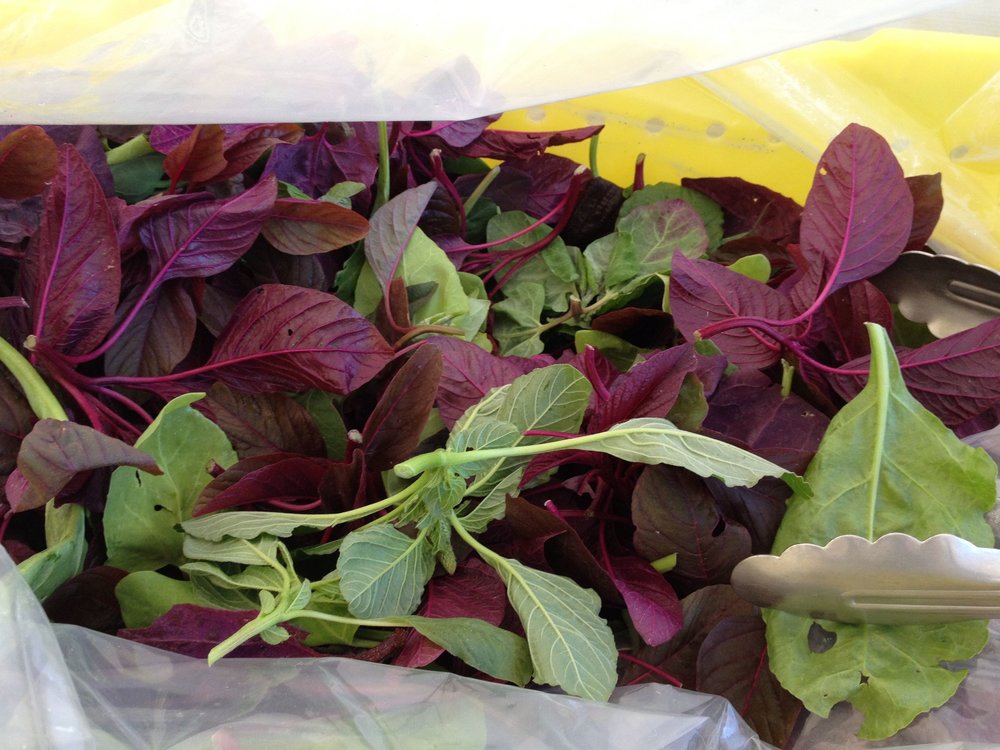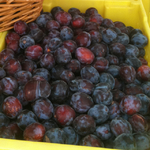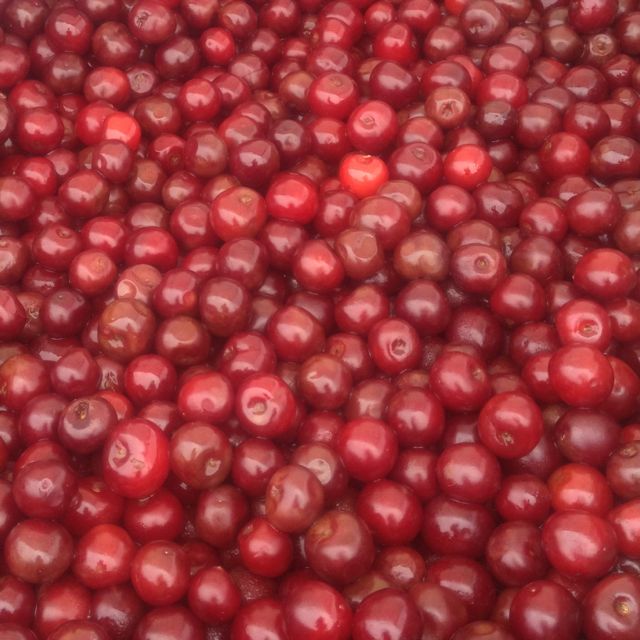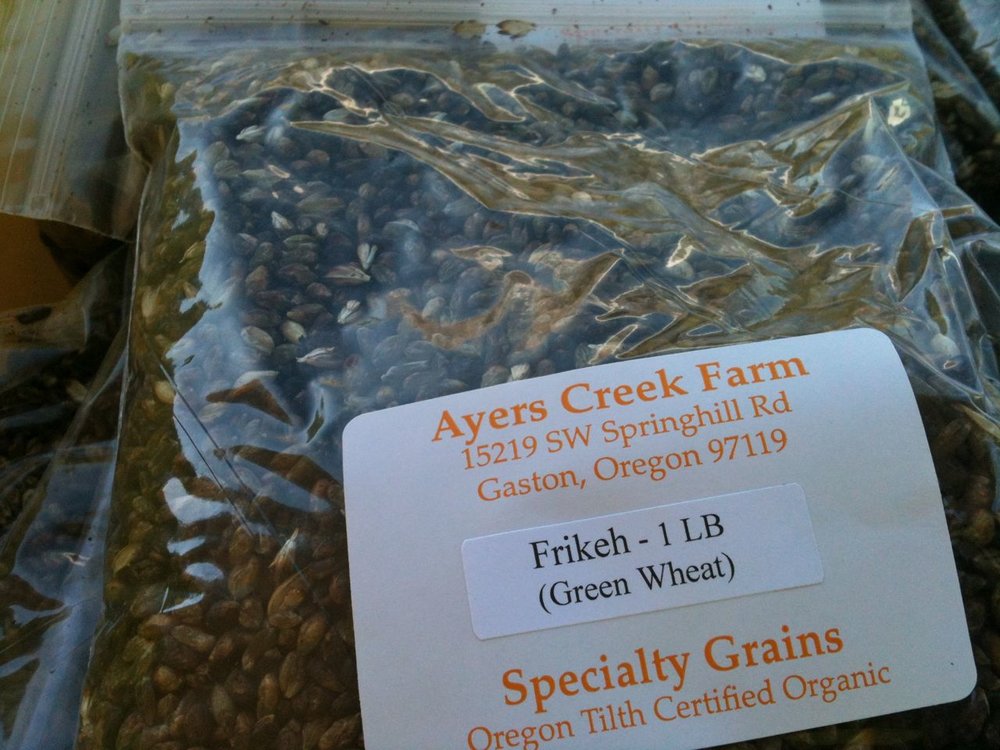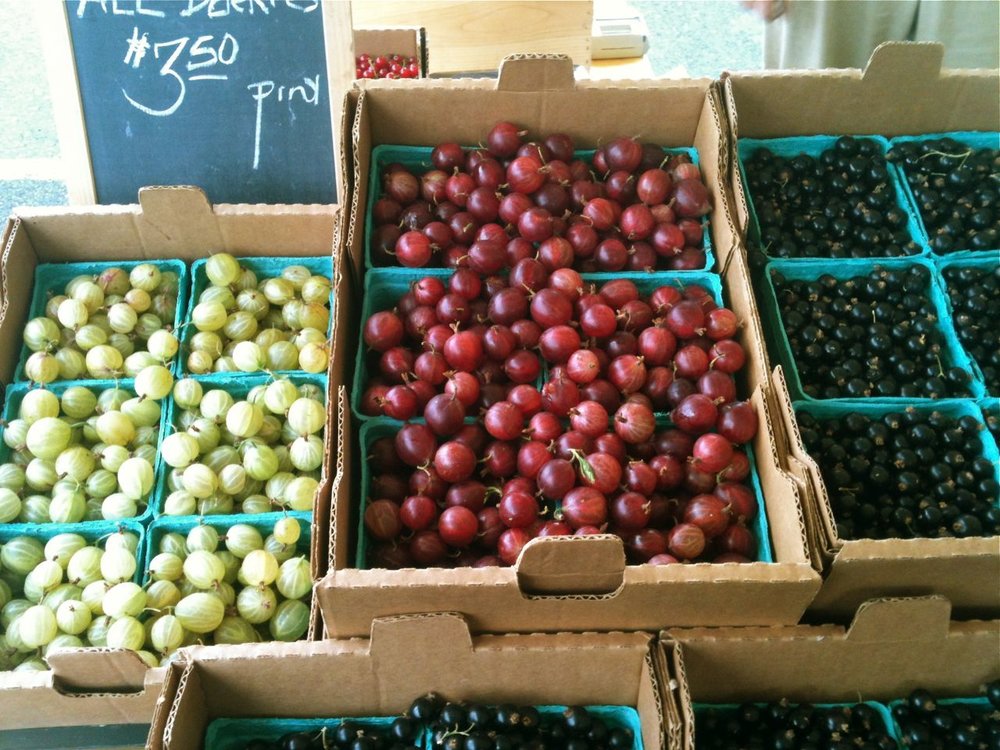Vendor Spotlight: Baird Family Orchards
Guest User
Farmers’ markets are a collection of businesses, a temporal grocery store where each shelf comes with a smiling face and a wealth of knowledge about the products they create. We’re giving our vendors the spotlight to share more about their role in the Hillsdale market community.
By Sarah West

When it comes down to it, Trevor Baird is, unsurprisingly, a fruit geek. Traipsing around his family’s Dayton area orchard on a hot early June afternoon, his enthusiasm is palpable as he introduces us to his trees. Among the popular sellers like Honeycrisp apples and Suncrest peaches are many varieties you and I have probably never heard of.
“I’m an experimenter,” Trevor declares, a statement that encompasses both his business strategy as the successor, along with his sister, Jennifer, of his parents’ orchard, and his personal fascination with the fruit growing profession.
He stops in front of an apple tree called Firecracker with dark red fruits hung along its drooping branches like, well, firecrackers. When mature, the petite apples have pure crimson flesh and a tart bite that Trevor sells to chefs looking for something striking to put on their plates. There’s Goldrush, a yellow-skinned apple with remarkable disease resistance and dense, tangy flesh that ages well in storage. There’s Harken, a peach whose fruits are still fuzzy green marbles, that’s Trevor’s favorite for its quintessentially peachy flavor. And then there are the pluots, a super-tasty hybrid of plums and apricots whose trees are known for taking a long time to settle in and which have yet, in Trevor Baird’s orchard at least, to produce more than a handful of fruits.

Farming is tricky business, requiring the financial deftness necessary to navigate market fluctuations and evolving consumer tastes, all while taming the wild horse that is your chosen field: its weeds and weather, its abundance and shortages, its relentless demands on your energy and time. Nowhere is this more apparent than in an orchard, where the terms are dictated by a tree’s timeline, not a human’s.
Freshly planted fruit trees must be irrigated, fertilized, protected from pests and pathogens, and weeded for 3-5 years before they begin to produce a significant yield. And yields, even on healthy, mature trees, will vary from year to year due to fluctuations in pollination rates and simply how the spring weather played out. If it gets too warm too early, a tree may bloom prematurely, only to have its tender flowers blasted by frost a few days later.
“This year,” Trevor explained, “the mild winter didn’t provide enough chill hours for the Honeycrisp to set much fruit.”
All fruit trees, notably apples, wait to initiate their spring bloom until they’ve registered a prescribed number of hours (the exact number varies by variety) at around 45-degrees Fahrenheit. But what’s bad for one crop is good for another, which is why diversity is the name of the game at Baird Family Orchards. To survive poor yields and shifting consumer tastes, you need to have made decisions three years ago that meet today’s needs. The best way to do that is to give yourself a lot of options.
 i
iPurchased in 1984 by Trevor’s parents, Don and Kathy, the 40-acre parcel that now hosts dozens of stone and pome fruit varieties came planted in standard cherries—enormous trees whose upper branches were too difficult to harvest. The Bairds soon removed them, putting apples and a few Suncrest and Flamecrest peaches in their place. As was the case for many small apple orchards of the time, the Alar (a chemical growth regulator and suspected carcinogen) scare of the late 1980’s drove wholesale apple prices so low it no longer made sense to harvest their trees, challenging the Bairds to reconsider their plantings yet again.
It was around this time that Don Baird and his son Trevor had begun selling fruit directly to consumers at some of the area’s first farmers markets in Gresham and Beaverton. The peaches they’d planted on a whim turned out to be a big hit with market customers, inspiring the Bairds to transition their orchard to include more stone fruits—peaches, cherries, apricots, and plums—while keeping some of their best apple varieties.

As we move through the orchard, Trevor noting when he expects this or that to show up at market, it becomes clear that each variety has a specific, and often short, harvest window. Because they sell at so many markets in the Portland area (around fifteen at last count), and since most varieties are planted in modest quantities, not all varieties make it to every market. As Trevor admits with a chuckle, this level of diversification would be madness on a wholesale farm, but it lends much needed flexibility to their farmers-market-oriented harvest schedule, and appealing novelty to their offerings. No two weeks at Baird’s stand taste the same.
If diversity is Baird’s survival strategy, flavor is their most compelling selling point. Their fruits are known for impressive sweetness and the way they all seem to taste like the best version of themselves. This is not an accident. Don, Trevor, and a dedicated team of farmhands, take great care to cultivate optimum flavor through variety selection, smart horticultural management, and by allowing their fruit to ripen on the tree.
The same standard of quality applies to Baird’s leased orchard, operated by Dan and Ron Gunkel, who continue to farm land their father established in Goldendale, Washington in 1936. Don Baird struck up a partnership with the Gunkels twenty years ago that resulted in a block of the Gunkel orchard dedicated to growing fruit just for the Bairds.
The Gunkel block allows the Bairds room to expand the supply of some of their more popular varieties. When something from the Dayton orchard—where Trevor and Don have the freedom to trial new varieties for performance, flavor, and customer popularity—does particularly well, they plant it on the Gunkel’s property in numbers large enough to keep the market booth stocked for more than a couple of weeks. Like the Bairds, the Gunkels harvest all of their trees by hand, selecting only the ripest fruit, and packing it with care to preserve its delicate texture.
“It’s a perfect partnership,” Trevor tells me. “We all work really well together, which is why the fruit tastes so good.”

The last thing Trevor shows us a row of top-grafts put in this spring. Top-grafting is a shortcut of sorts, where part of a mature tree is lopped off and branches (called scions) from a different variety are wedged into the host tree’s cambium. The host tree has more energy reserves than does a newly planted tree, resulting in larger harvests after a shorter wait period. They strike me as a fitting metaphor for Trevor and Jennifer Baird: the next generation growing from the challenges and momentum of its predecessor with the enthusiasm of a fresh start.
